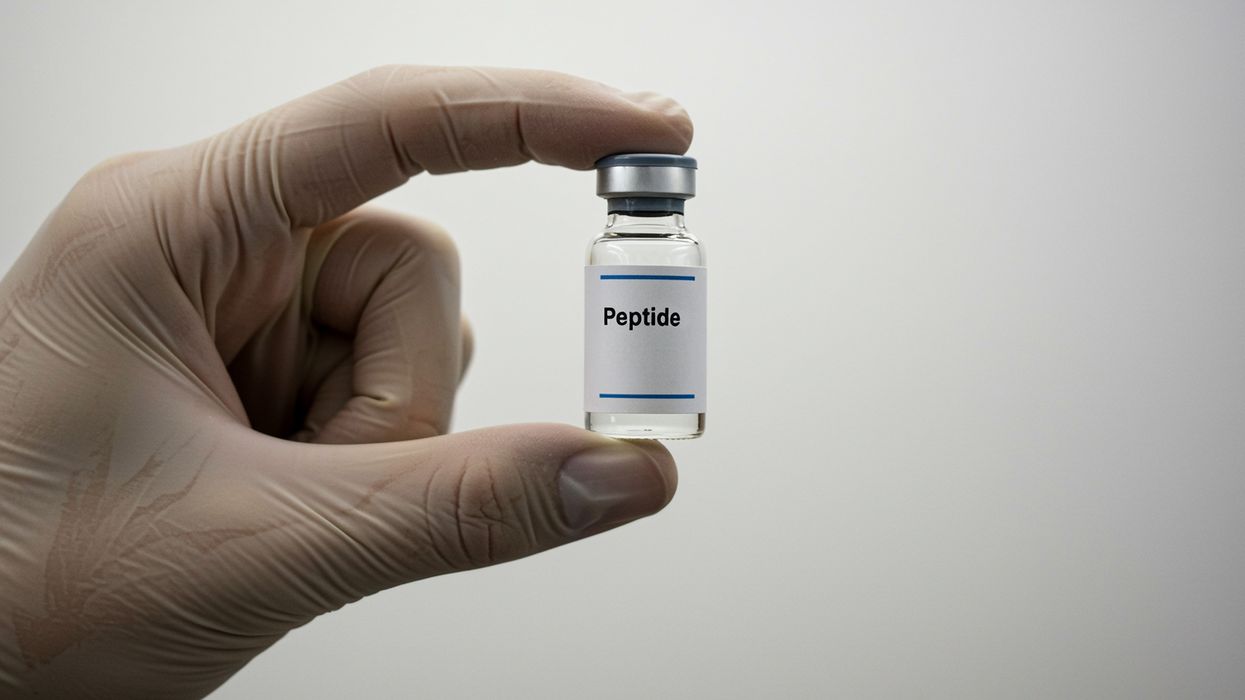According to Globenewswire, the global peptide therapeutics market will be US$56.2 billion by 2030. This expansion has created a parallel boom for research infrastructure companies or specialized firms offering peptide synthesis, analytical services, and scalable manufacturing solutions to pharmaceutical and biotech clients.
What Are Peptide Therapeutics?
Peptide therapeutics are a class of drugs consisting of amino acid chains, the building blocks of proteins. These molecules combine the precision of biologics with the synthetic adaptability of small-molecule drugs, making them ideal for treating complex diseases like diabetes, cancer, and autoimmune disorders.
Industry Impact
As the peptide therapeutics sector continues its rapid expansion, research infrastructure companies are playing an increasingly critical role in supporting the pre-clinical studies that drive therapeutic development. BioLongevity Labs, a USA-based supplier of research-grade peptides, has positioned itself at the intersection of this growing demand.
"The researchers we work with are doing incredible things in their labs right now—studies that could shape the next decade of peptide therapeutics," says Josh Felber, founder of BioLongevity Labs. "But their breakthroughs depend on having research compounds they can actually trust. When you're doing pre-clinical work that might lead to life-changing treatments, purity and quality aren't negotiable."
The company supplies pharmaceutical-grade peptides exclusively for in vitro research applications to academic institutions and research laboratories across the United States.
All compounds undergo third-party testing to verify purity standards, with manufacturing conducted domestically under Good Manufacturing Practices protocols.
Why Peptide Therapeutics Are Gaining Momentum
Blending the best attributes of small molecules and biologics, peptide therapeutics are breaking new ground in medicine. With their pinpoint accuracy, minimal side effects, and breakthrough potential against 'undruggable' targets, peptides reshape the future of pharmacotherapy.
One promising application involves protein- and peptide-engineered polymer nanoparticles, which encapsulate drugs and facilitate blood-brain barrier (BBB) crossing through receptor-mediated transcytosis. This approach enables precise, targeted drug delivery to specific brain regions. (1)
These innovations now enable effective treatments in oncology, metabolic disorders, infectious diseases, and neurodegenerative conditions, like Parkinson's disease.
For instance, GLP-1 analogs like semaglutide are widely used for type 2 diabetes and obesity due to their prolonged half-life and efficacy in regulating blood glucose and appetite.
In cancer treatment, peptides such as plitidepsin and PD-1/PD-L1-targeting candidates provide targeted therapy with fewer off-target effects compared to traditional chemotherapy.
Breakthroughs in synthesis techniques have streamlined therapeutics production. With these innovations, novel delivery systems (oral, nasal, and long-acting injectables) overcome historical bioavailability limitations. (2)
To fully realize these advancements' potential, biotech and pharma executives must prioritize strategic investments in peptide research and development to accelerate clinical translation. They must expand market access and affordability of these therapies while educating healthcare providers on their advantages over conventional treatments.
The Critical Role of Research Infrastructure Providers
BioLongevity Labs and similar companies occupy a specialized yet indispensable position within the drug development pipeline. While commercial peptide suppliers often prioritize large-scale production for clinical or therapeutic use, these research-focused firms cater specifically to the needs of early-stage scientific investigations.
For instance, recent advancements in pharmaceutical formulation strategies, such as permeation enhancers, enteric coatings, enzyme inhibitors, and micro/nanotechnology, have significantly improved the oral delivery of peptide drugs. These innovations enhance drug stability, absorption, and targeted release, enabling more effective preclinical studies. (3)
For academic and biotech researchers, access to high-quality, reliable compounds incorporating these technologies ensures robust preclinical data, accelerating drug discovery by providing a stronger foundation for translational research.
Research infrastructure providers pave the way to improved formulations, reducing variability in experimental outcomes and expanding the range of testable therapeutics.
Furthermore, independent analysis conducted through these providers removes any potential conflicts of interest, reinforcing trust in the supplied compounds. Researchers can proceed with confidence, knowing that the peptides they use meet stringent purity standards, which is crucial in reproducibility and accuracy in preclinical work.
While Good Manufacturing Practice (GMP) compliance is not mandatory for research-grade peptides, many forward-thinking suppliers adhere to these protocols anyway. Doing so minimizes batch-to-batch variability, a common pain point in early-stage research.
Research infrastructure companies provide a level of consistency typically associated with clinical-grade materials, further enhancing preclinical data reliability.
Research infrastructure providers serve as the backbone of peptide therapeutic development, bridging the gap between discovery and clinical application. Their emphasis on quality, transparency, and operational efficiency ensures that scientists can focus on innovation rather than troubleshooting supply-related issues.
This ultimately accelerates the translation of groundbreaking research into real-world therapies.
Challenges and Future Outlook
The peptide research supply sector faces significant challenges despite growing demand, including the need for scalable synthesis methods and rising raw material costs. Regulatory ambiguities surrounding peptide sourcing for preclinical work present hurdles for researchers.
Peptide therapeutics also encounter intrinsic obstacles such as poor stability, delivery difficulties, and low bioavailability. Stability is improved via chemical modifications (e.g., cyclization, stapling) to resist degradation.
Delivery systems like nanocarriers and hydrogels enhance targeting and protection. Bioavailability issues are addressed with oral nanotechnologies (e.g., viral-mimicking nanoparticles) and advanced methods (e.g., microneedles). (4)
As major pharmaceutical companies increasingly invest in peptide-based drug candidates, reliance on specialized research suppliers is expected to grow. For now, companies like BioLongevity Labs are playing a pivotal role by supporting foundational research that could pave the way for the next generation of therapeutics.
For biotech and pharmaceutical companies, this means opportunities to invest in advanced drug delivery systems to enhance the efficacy of peptide therapeutics like human growth hormone and antimicrobial peptides.
Research infrastructure providers, meanwhile, must focus on developing scalable synthesis solutions while managing costs and offering specialized services for modified peptides to support preclinical studies.

The rapid expansion of peptide therapeutics is driven by their target specificity, ability to address cardiovascular diseases, metabolic diseases, and even myocardial infarction, and their role in developing peptide vaccines that modulate the immune system.
Advances in peptide bonds engineering and delivery technologies, such as cell-targeting peptides and nanoparticle systems, are overcoming historical challenges like poor bioavailability.
Meanwhile, artificial intelligence is accelerating peptide drug design, optimizing structures like growth hormone analogs and next-gen therapeutics. As research infrastructure providers ensure high-quality preclinical compounds, the future of peptide-based medicine looks increasingly promising.
References
1. "Recent advances in therapeutic strategies for Alzheimer's and Parkinson's disease using protein/peptide co-modified polymer nanoparticles", Source: https://mednexus.org/doi/full/10.1002/nep3.60
2. "Therapeutic Peptides: Recent Advances in Discovery, Synthesis, and Clinical Translation", Source: https://www.mdpi.com/1422-0067/26/11/5131
3. "Advance in peptide-based drug development: delivery platforms, therapeutics and vaccines", Source: https://www.nature.com/articles/s41392-024-02107-5
4. "Therapeutic peptides in the treatment of digestive inflammation: Current advances and future prospects", Source: https://www.sciencedirect.com/science/article/pii/S1043661824004067#sec0160












